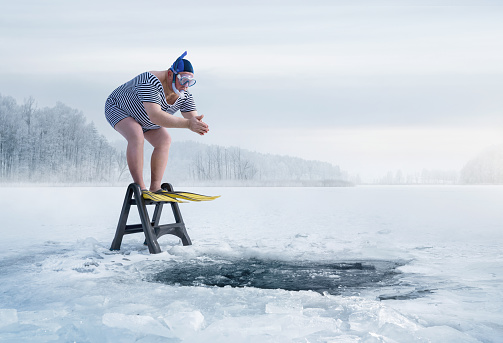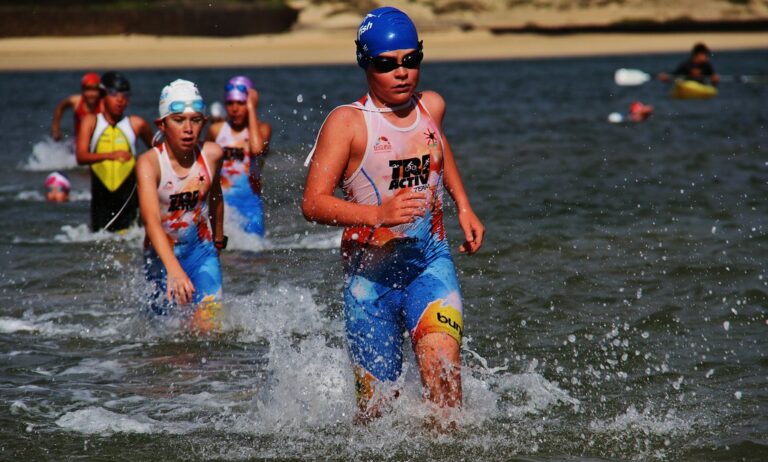General Rules of Surfing
Did you know that 80% of surfing-related accidents occur due to collisions in the water? Understanding and following the general rules of surfing are crucial to ensure your safety and the safety of others in the lineup. From surfing etiquette to right of way rules, there are essential guidelines every surfer should be aware of. By mastering these rules, you can navigate crowded lineups, prevent accidents, and enjoy a more harmonious surfing experience. Explore the foundational principles that govern the waves and enhance your surfing journey.
Surfing Etiquette
When surfing, it is crucial to adhere to proper etiquette in the lineup to ensure a harmonious and safe environment for all surfers. Respecting boundaries and following surfing ethics are fundamental in maintaining a positive and enjoyable experience for everyone in the water.
Respecting boundaries in the lineup means being aware of your surroundings and understanding the unspoken rules of the waves. It's essential to give fellow surfers enough space to catch waves without getting in their way. Cutting off someone else's wave or constantly snaking others can lead to tension and conflicts in the water. By respecting each other's boundaries, you contribute to a more inclusive and respectful surfing community.
Surfing ethics play a significant role in how surfers interact with each other. Being aware of the lineup hierarchy, waiting your turn, and sharing the waves generously are all part of good surfing etiquette. It's about understanding that everyone in the water is there to enjoy the waves and that cooperation and mutual respect are key to a positive surfing experience.
Right of Way
Respecting surfing etiquette is essential in the lineup, and understanding the right of way is crucial for a smooth and safe surfing experience. In the realm of wave hierarchy, knowing who has priority can prevent collisions and promote harmony in the water traffic. Surfing isn't just about riding waves; it's about sharing the stoke with others, and this begins with respecting the unwritten rules of the surf.
When it comes to surfboard positioning, remember that the surfer closest to the breaking part of the wave has the right of way. Position yourself properly in the lineup to catch waves without interfering with fellow surfers. Understanding lineup dynamics is key; take note of who is already riding a wave or in the best position to catch one next.
Priority Rules
When it comes to surfing, understanding the priority rules is crucial. Right of Way, Wave Selection, and Courteous Behavior are the key points you need to grasp. Respect the ocean, your fellow surfers, and the unwritten code of the waves to ensure a harmonious surfing experience.
Right of Way
Navigating the waves with respect for others' right of way is crucial for a safe and enjoyable surfing experience. When out on the water, remember these key points to ensure a harmonious surf session:
- Wave Etiquette: Understanding the unspoken rules of the waves fosters a sense of community among surfers.
- Surfing Rules: Familiarize yourself with the accepted guidelines to prevent conflicts in the lineup.
- Right of Way: Acknowledge the surfing hierarchy to avoid collisions and promote shared enjoyment.
- Surfing Hierarchy: Respect the established order of who gets priority on a wave to maintain a positive surfing environment.
Wave Selection
Selecting the right wave is a critical skill for any surfer looking to maximize their time in the water and catch the best rides. Wave positioning and peak selection are key factors in determining which wave to go for. Timing is crucial; you must anticipate the wave's break point to catch it at the perfect moment. Understanding the ocean's rhythm and knowing when to paddle hard are essential. Paddling strategy plays a significant role in wave selection; it can make the difference between missing a great wave or riding it perfectly. By observing the lineup, assessing wave patterns, and being strategic in your approach, you can increase your chances of scoring epic rides. Mastering wave selection will elevate your surfing experience to new heights.
Courteous Behavior
To fully embody the essence of surfing, one must adhere to the unwritten code of courteous behavior, also known as priority rules, that govern the lineup and ensure a harmonious and enjoyable experience for all surfers. When in the lineup, remember these key points:
- Respecting Boundaries: Acknowledge the personal space of fellow surfers and avoid crowding or cutting off others.
- Wave Sharing: Be mindful of sharing waves with other surfers, taking turns to catch the best waves in a fair manner.
- Communication: Use clear and respectful communication to avoid conflicts and ensure everyone has a chance to enjoy the waves.
- Encouragement: Support and uplift your fellow surfers, fostering a positive and inclusive surfing community where everyone feels welcomed and valued.
Crowded Lineups
In a crowded lineup, maintaining awareness of your surroundings is crucial for a safe and enjoyable surfing experience. Surfing challenges like overcoming fear can be magnified when navigating through a sea of fellow surfers. It's understandable to feel a surge of frustration when dealing with crowded lineups, but remember, everyone is out there to have a good time and catch some waves.
To thrive in crowded lineups, it's essential to stay calm and composed. Take a moment to assess the situation and find your place amongst the other surfers. Positioning yourself strategically can help you catch more waves and avoid collisions. Keep an eye out for incoming sets and be ready to adjust your position accordingly.
Communication is key in crowded lineups. Respect other surfers' right of way and be vocal about your intentions. By signaling where you plan to paddle or which wave you're going for, you can prevent misunderstandings and create a more harmonious surfing environment.
Embrace the challenge of crowded lineups as an opportunity to improve your surfing skills. By learning to navigate through the chaos, you'll become a more confident and adaptable surfer. Remember, the ocean is vast, and there's always room for everyone to enjoy the waves.
Safe Surfing Practices
Prioritize your safety by adhering to essential safe surfing practices while out in the water. To fully enjoy the waves, it's crucial to take precautions and be prepared. Follow these fundamental guidelines:
- Surfboard Care and Board Selection: Before hitting the waves, ensure your surfboard is in good condition. Check for any dings or cracks that may compromise your safety. Additionally, choose a board that matches your skill level and the wave conditions to prevent accidents.
- Wave Safety: Always respect the power of the ocean. Be aware of the wave size and strength before entering the water. Start with smaller waves if you're a beginner and gradually progress to larger ones as you gain experience. Understanding the waves will help you stay safe and have a more enjoyable surfing session.
- Rip Currents: Be cautious of rip currents, which can quickly pull you away from the shore. If caught in a rip current, stay calm and swim parallel to the beach until you escape its pull. Learning how to identify rip currents and what to do when caught in one is essential for your safety.
Communication in the Water
Respecting the waves and safeguarding your surfing experience extends to effective communication in the water, a crucial aspect of staying safe and connected with fellow surfers. When out there, remember that communication is not just about words but also body language. It's about showing respect, being aware of your surroundings, and looking out for one another. Effective communication in the water ensures not only your safety but also the safety of those around you.
To maintain water safety, start by acknowledging others in the lineup with a simple nod or a smile. This small gesture can go a long way in fostering a sense of community and mutual respect. When catching a wave, make your intentions clear by using hand signals or calling out your direction to avoid collisions. If you see someone in trouble, communicate it to others or offer help if you can do so safely. Remember, in the water, we are all part of the same tribe, sharing the same passion for the waves.
Respecting Local Surf Culture
As a dedicated surfer, you understand the importance of respecting local surf culture. It's not just about catching waves; it's about embracing the cultural etiquette and being involved in the community. By honoring the traditions and values of the local surf scene, you contribute to the preservation and growth of the sport you love.
Cultural Etiquette
Immerse yourself in the local surf culture by embracing and respecting the traditions and customs of the community. When engaging in respectful interactions and adhering to local customs, you not only show your appreciation for the surf culture but also contribute positively to the community. Here are some key points to keep in mind:
- Respect the lineup: Wait your turn and avoid dropping in on others.
- Learn the local lingo: Understanding and using the local surf terms shows respect for the community.
- Support local businesses: Patronizing local surf shops and eateries helps sustain the surf culture in the area.
- Participate in community events: Joining local surf competitions or beach clean-ups fosters a sense of camaraderie and respect within the community.
Community Involvement
To fully embrace and honor the local surf culture, engage actively in community events and support local businesses. Immersing yourself in the vibrant surf community not only enriches your experience but also shows respect for the traditions and values held dear by local surfers. Look out for volunteer opportunities that allow you to give back to the community that welcomes you to their waves. Participating in beach clean-ups, fundraisers, or surf contests not only connects you with like-minded individuals but also helps preserve the beauty of the surf environment for generations to come. Supporting local businesses, whether it's grabbing a post-surf coffee or shopping at surf-owned stores, strengthens the community bonds that make the surfing culture so special.
Environmental Awareness
When hitting the waves, remember to always be mindful of your impact on the environment. Surfing is not just about riding the waves; it's about respecting and protecting the natural world that provides us with such joy and beauty.
Here are some essential ways you can contribute to preserving the environment while enjoying your surfing adventures:
- Participate in beach cleanups: Take the time to join or organize beach cleanup initiatives. By picking up trash and disposing of it properly, you can help keep our coastlines clean and protect marine life from harm.
- Support conservation efforts: Get involved with local conservation groups or initiatives that focus on preserving coastal habitats and wildlife. Your support can make a significant difference in safeguarding these precious ecosystems for future generations.
- Respect marine life: When surfing, be mindful of the marine life around you. Avoid disturbing animals, give them space, and never litter in the ocean. Remember, we are just visitors in their home, and it's crucial to treat them with care and respect.
- Protect the ecosystem: Educate yourself about the marine ecosystem and how human activities can impact it. By understanding the delicate balance of the ocean environment, you can make informed choices to minimize your ecological footprint while surfing.
Surfing Gear Maintenance
For optimal performance and longevity of your surfing gear, ensure consistent and thorough maintenance after each session. Proper board care is essential for keeping your surfboard in top condition. After each surf, rinse your board with fresh water to remove any salt or sand that could cause damage. Regularly inspect your board for any dings or cracks that may need repair to prevent water from seeping into the core.
When it comes to wax removal, use a wax comb to scrape off old wax buildup. This will help maintain traction and prevent your feet from slipping during rides. Additionally, applying a fresh coat of wax regularly will enhance your performance on the waves.
Wetsuit maintenance is crucial for both comfort and durability. After each use, rinse your wetsuit with fresh water and hang it to dry in the shade. Avoid exposing it to direct sunlight for extended periods, as this can cause the neoprene to deteriorate. To prolong the life of your wetsuit, consider using a wetsuit shampoo to remove salt, sand, and bacteria.
Don't forget about leash care. Inspect your leash for any signs of wear and tear, such as fraying or weak attachment points. Replace your leash if necessary to ensure it stays securely fastened to your board. By taking good care of your surfing gear, you'll be ready to catch waves with confidence and style.
Frequently Asked Questions
What Are Some Common Beginner Mistakes to Avoid While Surfing?
When you're starting out surfing, focus on proper positioning and wave selection. Avoid rushing into big waves. Work on balance and timing. Don't be discouraged by falls; they're part of the journey to becoming a skilled surfer.
How Can Surfers Improve Their Paddling Technique for Catching More Waves?
Imagine yourself as a sleek dolphin gliding through the ocean. To catch more waves, focus on paddling drills to build strength and efficiency. Master wave positioning, use strategic breathing techniques, and soon you'll be effortlessly catching waves.
What Are Some Tips for Choosing the Right Surfboard for Different Wave Conditions?
When choosing a surfboard for different wave conditions, consider the surfboard shapes and their advantages. Opt for a shorter board in smaller waves for more maneuverability and a longer board in larger waves for better stability and paddle power.
How Can Surfers Stay in Shape and Improve Their Overall Fitness for Surfing?
To improve your surfing fitness, focus on strength training for power, flexibility for agility, cardio for endurance, and balance exercises for stability. Consistent workouts will boost your overall performance in the waves.
What Are Some Ways to Overcome Fear and Build Confidence in the Water While Surfing?
To overcome fear and boost confidence in the water, focus on mental preparation through visualization. Practice deep breathing techniques and repeat positive affirmations. Embrace the waves with courage and determination, and watch your surfing skills soar.






